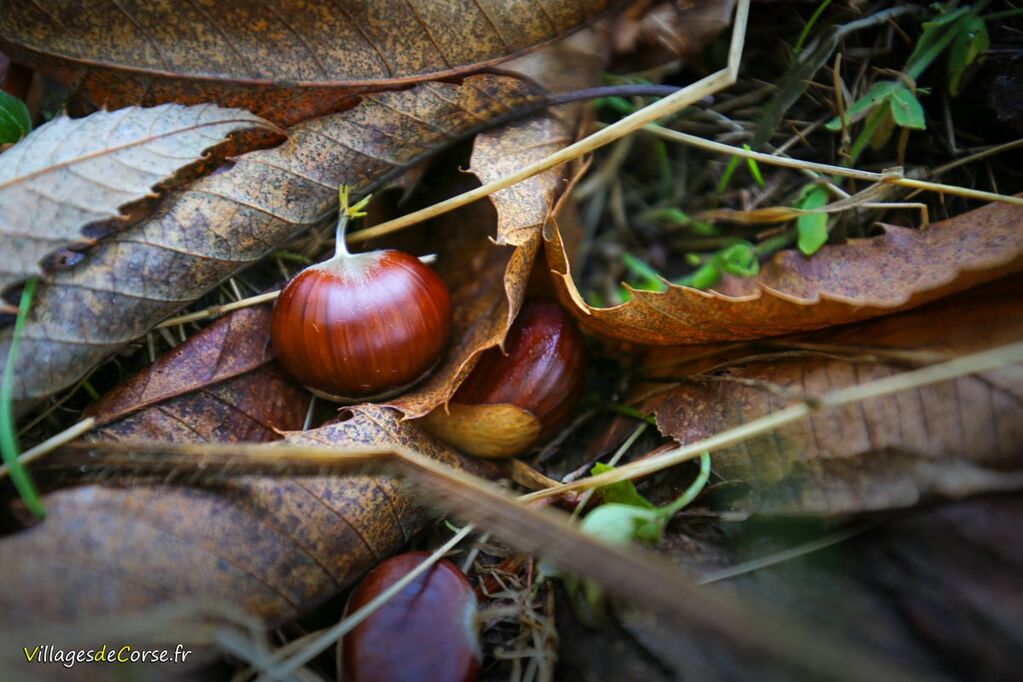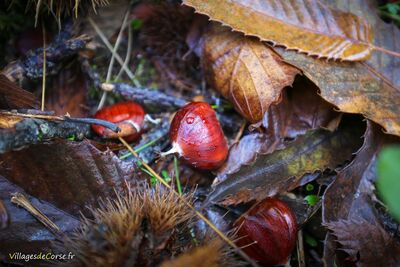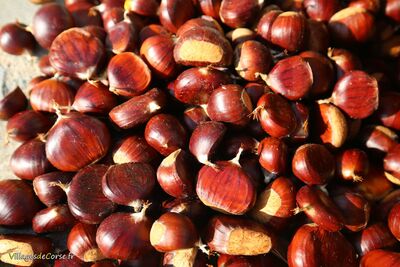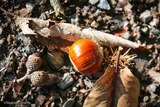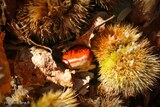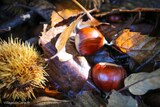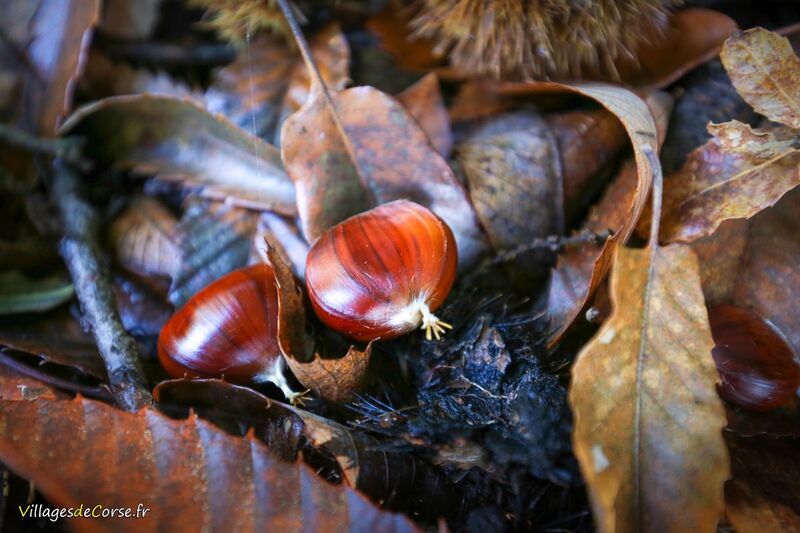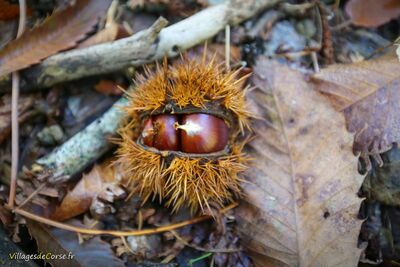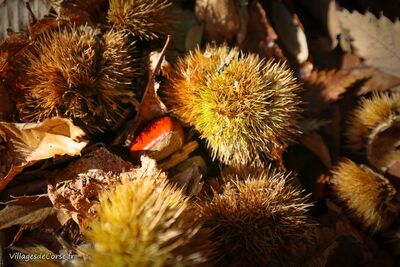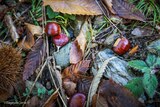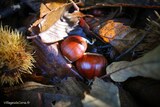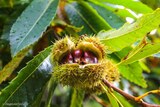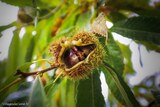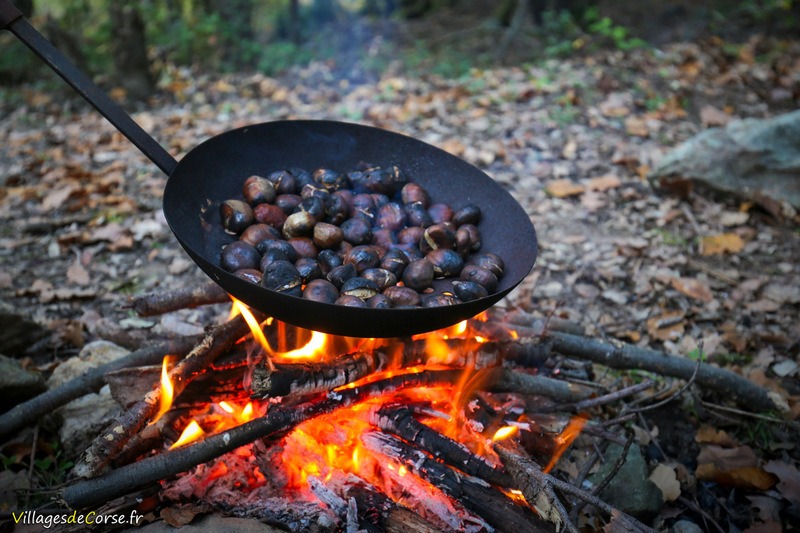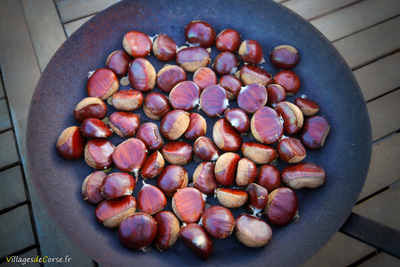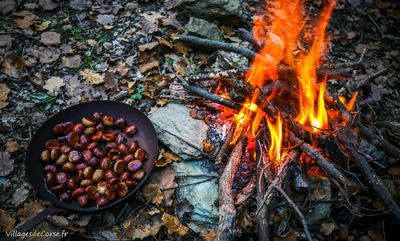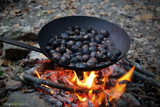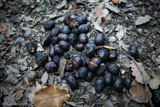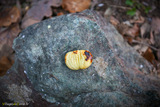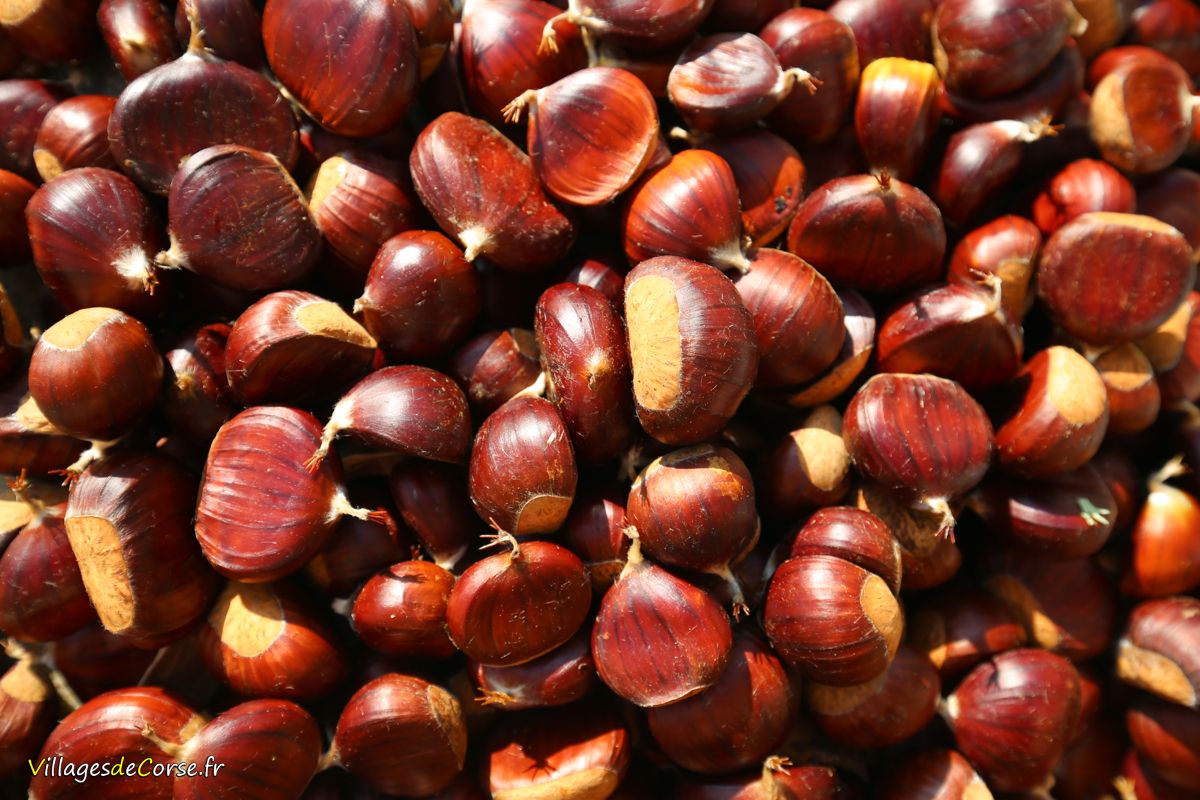- Articles
- Fauna and Flora
- Forest
- Chestnut
The Corsican chestnut
In Corsica, the chestnut occupies a special place both gastronomically and culturally. In October, the chestnut tree's bugs turn brown and open, revealing a few fruits ready to fall.
The chestnut, symbol of autumn in Corsica
With the hustle and bustle of summer behind us, as the sun declines and the days grow shorter, Corsica dons its autumn colors. As nature prepares for winter, the chestnut trees seem to take time the wrong way.
From the second half of October, the first chestnuts begin to fall, hidden between the bogues and chestnut leaves that gradually cover the ground in autumnal brown.
How to eat chestnuts
Baked or steamed chestnuts
Chestnuts can be baked in the oven, with a small notch on each chestnut to prevent them from exploding. Preheat the oven to 180%, and leave them in for a few minutes.
Steaming or boiling them has the advantage of releasing the bark more easily.
Chestnuts braised or cooked over a wood fire using the chestnut pan
Traditionally eaten over an open fire, chestnuts are placed directly on the coals for an authentic tasting experience. You can also use a chestnut pan to roast chestnuts more superficially, with less risk of burning them.
Dried or raw chestnuts
For crudivores, chestnuts can be eaten raw, freshly picked, but will not be very digestible. The alternative would be to dry them, making them very hard and requiring patience and good teeth.
Traditional chestnut flour production
Chestnuts are dried in granaries, placed over a fire that keeps them dry, sweeping away moisture and preventing the proliferation of worms. Once dried, the dried chestnuts are half-filled into a canvas bag, which is then beaten against a stone to remove the bark. Once clean and sorted, they are baked in a wood-fired oven. Once they have cooled, the final step is to grind them.
Pulenta and other chestnut flour recipes
Pulenta is a Corsican recipe based on chestnut flour, water and a little lone that is cooked while being stirred in a pot. Traditionally eaten with fromage frais and figatellu in winter.
Chestnut flour is also used to make cakes and flans, or to add flavor to dry cookies such as canistrelli. In the past, it was used as flour for bread.
Chestnuts can also be found in soup as a velouté, or as a dessert in jam or marrons glacés.
Where to pick chestnuts in Corsica?
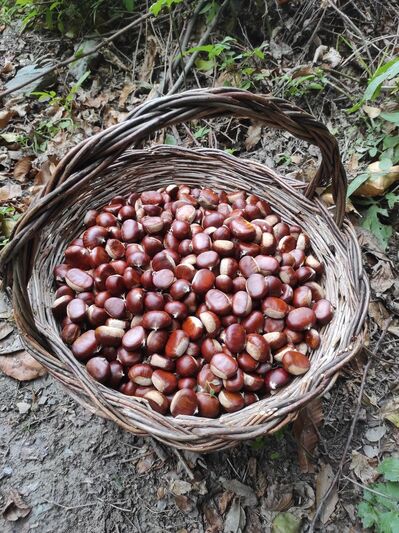
Most (but not all) of the island's micro-regions offer beautiful chestnut groves for collecting chestnuts without encroaching on private land that needs to be fenced off. Around Ajaccio in Cuttoli, in the Cruzini, the Deux Sorru, the Nebbiu, and of course Castagniccia - the chestnut-growing region par excellence - chestnuts can be picked by the roadside, or on hiking trails. They are much less common in the far south, and in Balagne, apart from a few chestnut trees at altitudes of over 500 metres.
And to collect your chestnuts, don't forget a chestnut pan, a lighter and a knife to pierce them, not forgetting a wicker basket like those at the Vannerie de Calenzana, which, if well filled, will provide you with enough chestnuts to last you a whole week. Be careful, however, not to light a fire in the forest on risky or forbidden sites.
Don't confuse chestnuts with marrons
Chestnuts come from a tree native to India and related to the chestnut tree. The bogue is round and thorny, and contains just one fruit, whereas the chestnut bogue contains 3 or 4. The major difference between the two is that the chestnut is poisonous, and therefore inedible. In other respects, the chestnut is larger, more rounded and lacks the little tail that chestnuts have.
Warm chestnuts?
On the mainland, in mountainous regions, roasted chestnut vendors are often heard on winter evenings shouting "Chauds marrons! In truth, the name is a misnomer: these are chestnuts, not marrons. It's because the largest of the latter are selected that they resemble chestnuts.
The history of chestnuts in Corsica
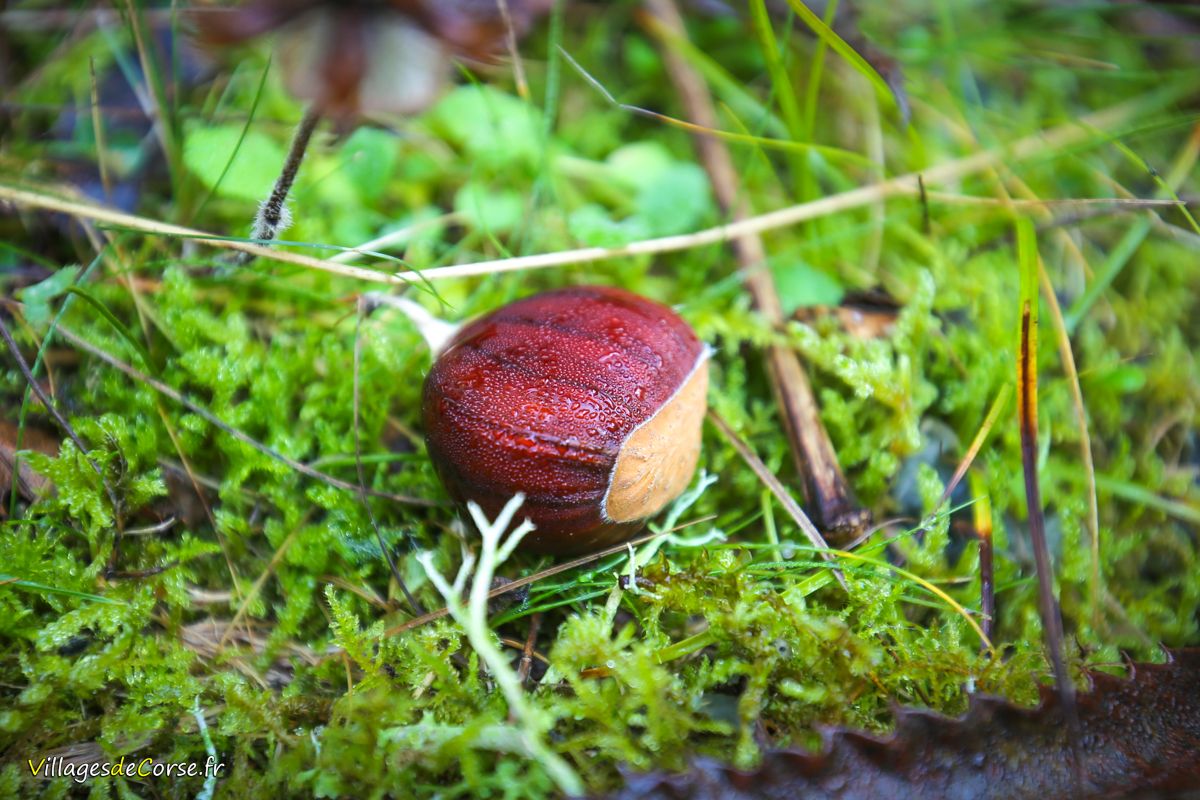
Corsica has close ties with its chestnut groves, which have enabled it to survive in times of crisis as well as war, and have given a region the name Castagniccia, derived directly from the Corsican word for chestnut (a castagna).
Today, with over 20,000 hectares of chestnut groves spread across the entire territory (to a lesser extent in the far south, Cap Corse and Balagne), Corsica has not always been a land of castaneiculture. Although endemic to the island, the chestnut tree does not thrive easily in the face of competition from scrubland or other trees, or the passage of animals. Unlike oak, whose forests are self-regenerating, there would be no chestnut groves without human intervention.
A thousand-year-old culture
Chestnut cultivation dates back to the Roman Empire, before the Genoese centuries later made it a priority to turn chestnuts into an export product. In the 19th century, the island's chestnut groves were almost twice as large as they are today.
Plagued by cynips (a parasite native to China) for some years now, chestnut trees are part of a heritage that is as precious as it is vulnerable, hence the value placed on them on the island. Every year, Bocognano hosts a very popular chestnut fair, a fiera di a Castagna.
Chestnut tree characteristics
A majestic deciduous tree, the chestnut can live up to 500 years, with a trunk that can exceed 5 meters in diameter and reach heights of up to 30 meters. On the other hand, it takes around fifty years for a young plant to bear fruit, so much so that a Corsican proverb says that he who plants a chestnut tree will not eat its fruit.
Chestnut wood
Chestnut trees have also been exploited for their noble wood, which is widely used to make Corsican furniture and structural beams. Chestnut wood was also used for heating.
